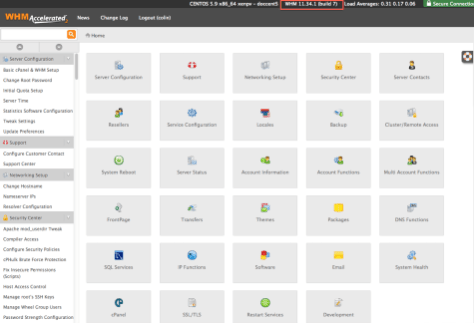Allocating and managing resources means creating hosting packages containing a set resource usage allowance for domains and websites you want to host on your dedicated server or VPS. You can set the maximum amount of resources that a domain can use so that other websites won’t get affected by it.
- If you are running only one website then you may simply allot all server resources to it
- If you are running multiple websites then you may either set a resource quota for each website or let all your websites freely use server resources
This lesson will guide you in creating new hosting packages, allocating resources, and assigning them to your domains.
Log in to your Sangkrit.net Account then follow these steps:
- Visit Products page
- Click the Servers tab
- Next to the account, you want to use, click Launch
- From the management interface, next to the cPanel Site,
- Click Manage Server (WHM)
- Click Proceed
On your server’s home, add a new package:
- Find the Packages section on the left sidebar,
- Click Add a Package
Define regulations such as:
- Disk space
- Max domains
- Max bandwidth usage
- Max database usage
- Max email, etc
As required by you, each or selective option can be left to unlimited. Now, click the blue color Add button at the bottom of the screen. That’s it, your package has been successfully created.
This way you can create as many packages as you want, and each package will work as a separate cPanel hosting account. You can edit or delete any packages by revisiting the packages page from the left sidebar of your dedicated server‘s home. The same steps also work for virtual private servers.


































